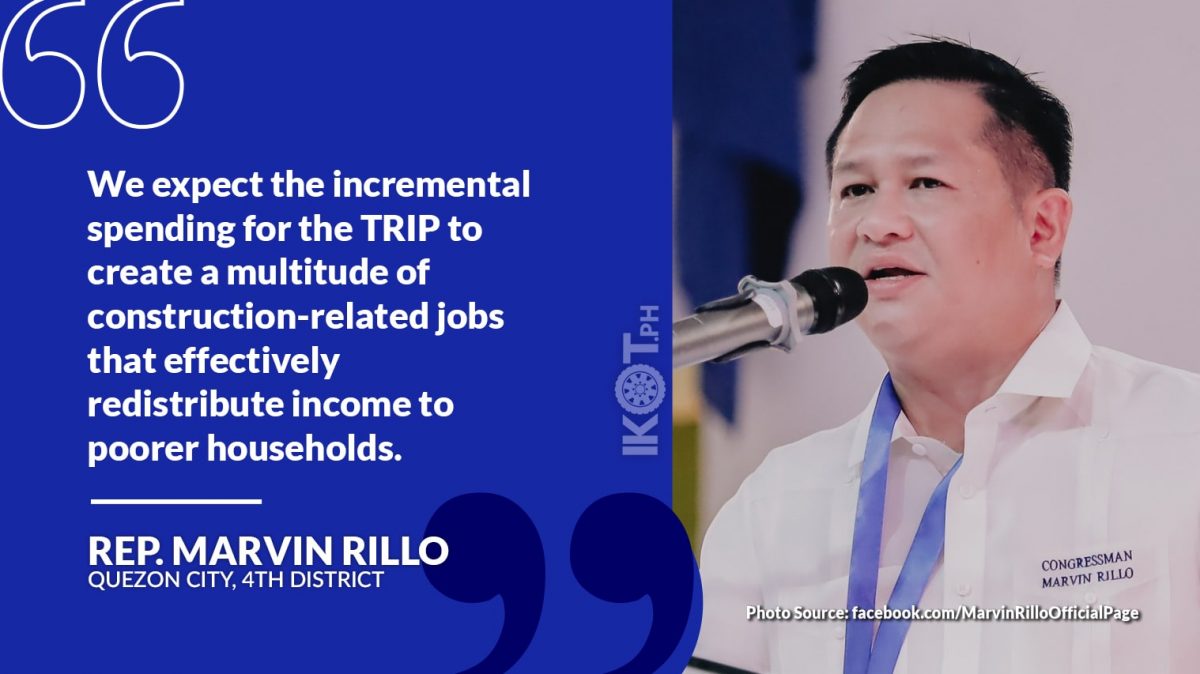The national government is investing another P14 billion to develop access roads and bridges to tourist destinations across the country, Quezon City Representative Marvin Rillo, vice chairperson of the House committee on tourism, said.
The P14 billion is itemized in the national spending plan for 2024 and is on top of the P17.7 billion already earmarked for the Tourism Road Infrastructure Program (TRIP) this year, according to Rillo, also a member of the House committee on appropriations.
“We expect the incremental spending for the TRIP to create a multitude of construction-related jobs that effectively redistribute income to poorer households,” the legislator said.
“The improved infrastructure will also help drive tourist traffic and employment growth in accommodation, transport, food and beverage services, entertainment, and other activities in the (tourism) value chain.”
“The improved infrastructure will also help drive tourist traffic and employment growth in accommodation, transport, food and beverage services, entertainment, and other activities in the (tourism) value chain,” the lawmaker added.
The TRIP bankrolls the construction and upgrading of roads and bridges leading to declared tourist sites that are not yet covered by other funding sources.
The Department of Tourism (DOT) and the Department of Public Works and Highways (DPWH) jointly identify the projects under the TRIP, which is in support of the National Tourism Development Plan.
“A total of 2,938,717 foreign tourists and 279,668 Filipinos who are permanent residents abroad visited the Philippines from January to July this year.”
Based on DOT data submitted to Congress, a total of 2,938,717 foreign tourists and 279,668 Filipinos who are permanent residents abroad visited the Philippines from January to July this year.
The top 10 foreign visitor arrivals from January to July by nationality were:
· South Korea – 814,559 (25.31%)
· American – 607,113 (18.86%)
· Japanese – 154,851 (4.81%)
· Chinese – 149,518 (4.65%)
· Australian – 148,079 (4.60%)
· Canadian – 143,610 (4.46%)
· Taiwanese – 108,716 (3.38%)
· British – 106,364 (3.30%)
· Malaysian – 61,070 (1.90%)
· Singaporean – 56,879 (1.77%)


